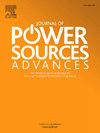Recovery of LiFePO4 cathodes: Criticalities and prospect towards a long-term eco-friendly solution
IF 4.6
Q2 CHEMISTRY, PHYSICAL
引用次数: 0
Abstract
Lithium iron phosphate batteries are currently getting increasing attention due to their low cost, good cycling stability and high safety characteristics. Enhanced batteries consumption is accompanied by their subsequent discard that, if poorly managed, may cause serious environmental damage as well as severe economic losses. Numerous cathode recycling techniques have been developed, including pyro/hydrometallurgical methods and direct regeneration.
Besides providing information on the working and failing mechanism of these batteries, this review aims to present the most relevant spent cathode treatments, with an emphasis on environmental and economic implications. Moreover, it examines global regulations on lithium-ion battery recycling and identifies unresolved issues that still need to be addressed.
Our analysis revealed that using organic acids significantly enhances the economic feasibility of hydrometallurgical processes, enabling for selective lithium recovery. This approach not only simplifies the procedure but also makes it more eco-friendly. Direct regeneration techniques, on the other hand, emerge as both economical and green alternatives to produce new cathodes with excellent electrochemical properties, but are difficult to apply due to the variability of the spent materials to be treated. Lastly, it appears imperative for legislators to formulate a regulatory framework specifically tailored to the treatment of spent lithium-ion batteries.

LiFePO4阴极的回收:关键和对长期生态友好解决方案的展望
由于磷酸铁锂电池具有成本低、循环稳定性好和安全性高等特点,目前正受到越来越多的关注。在电池消耗量增加的同时,其废弃物如果处理不当,可能会造成严重的环境破坏和经济损失。除了提供有关这些电池的工作和失效机理的信息外,本综述还旨在介绍最相关的废阴极处理方法,重点关注对环境和经济的影响。我们的分析表明,使用有机酸可显著提高湿法冶金工艺的经济可行性,从而实现选择性锂回收。这种方法不仅简化了流程,而且更加环保。另一方面,直接再生技术是一种既经济又绿色的替代方法,可用于生产具有优异电化学特性的新阴极,但由于待处理废旧材料的可变性,这种方法很难应用。最后,立法者必须制定专门针对锂离子废电池处理的监管框架。
本文章由计算机程序翻译,如有差异,请以英文原文为准。
求助全文
约1分钟内获得全文
求助全文

 求助内容:
求助内容: 应助结果提醒方式:
应助结果提醒方式:


